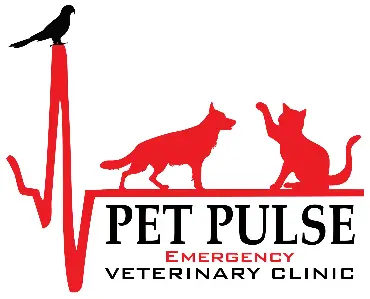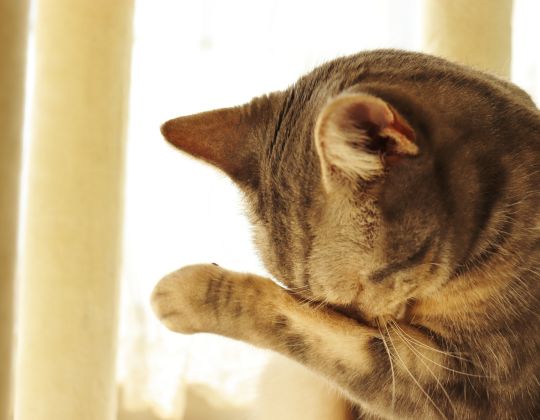Many cat owners get worried when they notice their pet’s eyes watering. Sometimes it is harmless, but other times it points to something more serious. If you are wondering whether you should be concerned, this guide will explain everything you need to know about a teary eyed cat.
A teary eyed cat can be caused by simple irritants like dust or allergies, but it may also signal eye infections, blocked tear ducts, or other health issues. If the tearing is constant, colored, or paired with redness and swelling, a vet check is recommended.
Understanding the possible causes and knowing when to act is the first step toward keeping your cat healthy and comfortable.
Why Is My Cat’s Eye Watering?
Several things can cause cats’ eyes to water:
Allergies or Irritants
Dust, pollen, smoke, or strong cleaners can irritate a cat’s eyes, making them water.
Eye Infections (Conjunctivitis or Pink Eye)
A cat with pink eye may have redness, discharge, swelling, and constant tearing. This often needs veterinary care.
Blocked Tear Ducts
Some cats develop blockages that stop tears from draining properly.
Injury or Foreign Object
A scratch from play, litter dust, or a tiny object stuck in the eye can cause excessive tearing.
Respiratory Infections
Cats with colds often have watery eyes along with sneezing or nasal discharge.
Breed Factors
Flat-faced breeds like Persians and Himalayans are prone to watery eyes because of their facial structure.
Diet-Related Sensitivity
Some pet parents notice, “My cat’s eye waters when he eats.” This can be linked to mild food allergies or sinus sensitivity.
Symptoms That May Come With Teary Eyes
Watery eyes are often just one part of a bigger picture. You may also notice:
- Redness around the eye
- Swelling of the eyelids
- Frequent blinking or squinting
- Pawing at the face
- Sneezing or nasal discharge
- Lethargy or loss of appetite
If your cat shows more than one of these symptoms, the issue may be more than simple irritation.
What Does the Discharge Look Like?
- Clear watery eyes usually mean allergies or irritants.
- Yellow or green discharge may point to an infection.
- Reddish brown discharge often comes from excessive tearing, as tears dry and leave a stain.
- Thick mucus-like discharge could indicate conjunctivitis.
If your cat has reddish brown eye discharge, it usually means excess tears have dried, but if it looks thick, crusty, or is paired with redness, consult a vet.
How Vets Diagnose Watery Eyes?
A veterinarian will examine the eye closely and may use special stains to check for scratches or ulcers. In some cases, they will test tear production, flush the tear ducts to see if they are blocked, or take samples of discharge to check for infection. This process helps find the exact cause so the right treatment can be given.
How to Treat Cats’ Watery Eyes?
Treatment depends on the cause. Some general remedies and steps include:
- Keep the Eyes Clean. Gently wipe away tears with a clean, damp cotton pad. Avoid harsh wipes.
- Reduce Irritants. Keep your cat away from smoke, perfumes, and dusty litter.
- Eye Drops (Vet-Approved Only). Never use human eye drops. Your vet may prescribe an antibiotic or lubricating drops if needed.
- Diet Check. If watery eyes happen after meals, ask your vet if food sensitivities could be involved.
- Vet Care for Infections. Pink eye and other bacterial or viral infections often need medication.
Home Remedies vs. Vet Care
You may try safe home care like cleaning and reducing irritants, but if symptoms last more than a couple of days, worsen, or include swelling, pain, or pus-like discharge, it is time to see a vet.
A watery eye in cats that lasts more than 48 hours, comes with redness, or produces yellow or green discharge should be checked by a vet.
Prevention and Ongoing Care
While not all cases of watery eyes can be prevented, a few steps can lower the chances:
- Keep your cat’s environment clean and free of dust and smoke
- Use unscented litter to reduce irritation
- Groom long-haired or flat-faced breeds regularly to keep hair away from their eyes
- Provide a balanced diet and watch for food sensitivities
- Schedule regular vet checkups to catch problems early
When to See the Vet
Seek veterinary help if you notice:
- Constant tearing with redness or swelling
- Discharge that is yellow, green, or bloody
- Signs of pain, such as squinting or pawing at the eye
- Both eyes affected
- Recurring watery eyes despite cleaning
Wrap-up
A teary eyed cat is common, but it can signal allergies, pink eye, or other health issues. Clear discharge is often harmless, while colored or persistent discharge means your cat needs veterinary care. Always avoid human medications and consult your vet for the right treatment.



